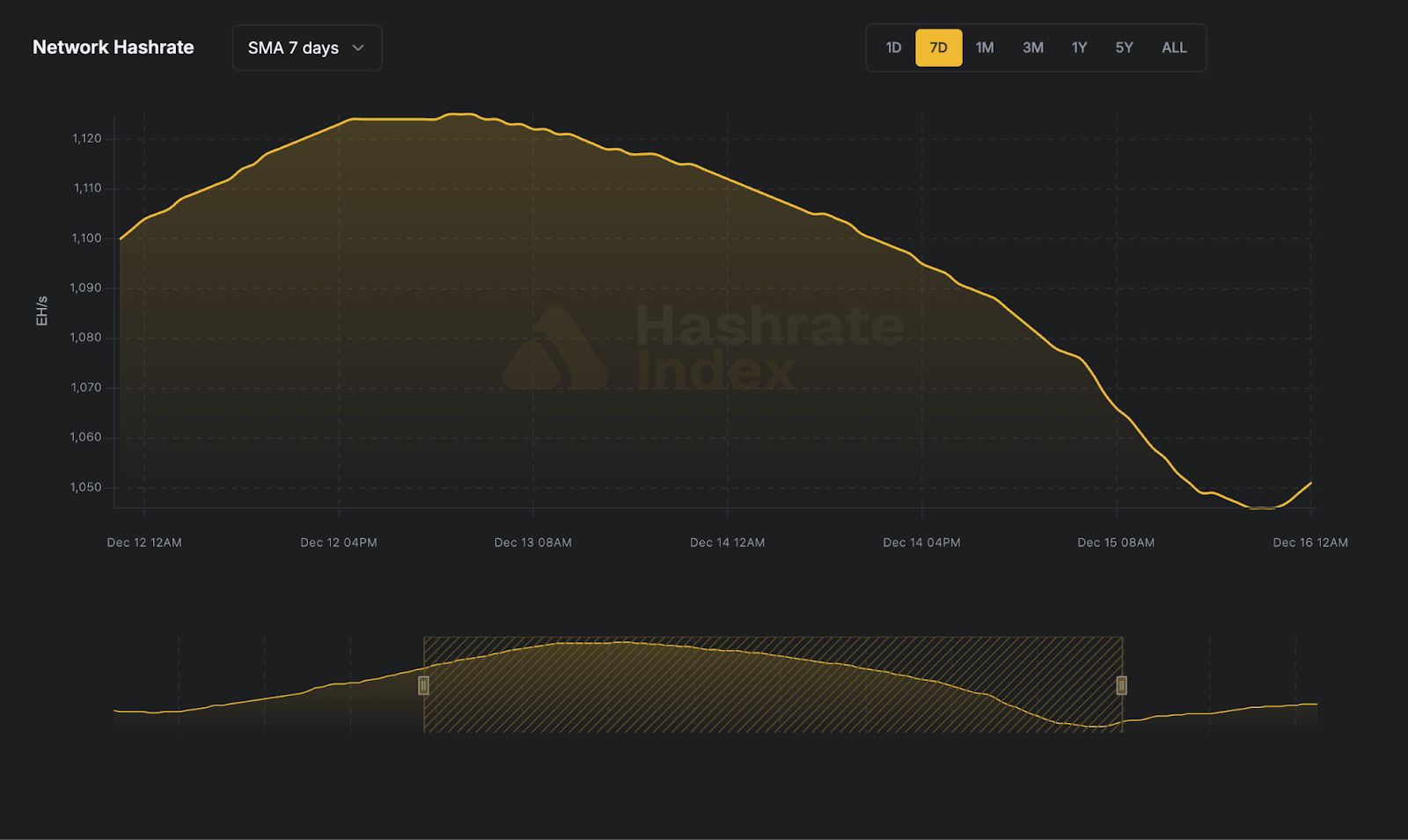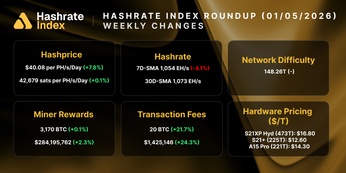
Energy Markets for Bitcoin Miners: Ancillary Services
How flexible miners earn revenue by supporting the grid — and why structure matters.
Luxor’s Energy Markets for Bitcoin Miners series explores how miners engage with power markets to optimize profitability and manage risk.
In the first post of this series, we explored how Bitcoin miners manage market exposure through spot and fixed-price power contracts. These profiles offer different trade-offs: spot provides flexibility, while fixed-price power introduces cost certainty and the potential to monetize volatility through grid resale.
In the second post, we dug into a more advanced strategy: fixed-price power contracts overlaid with financial instruments, specifically short call options on power and fixed Bitcoin mining pool payouts. Together, these tools allow miners to lock-in operating margins and grow.
In this post, we’ll examine how miners are producing value beyond Bitcoin, by tapping into ancillary services.
Introduction
Most Bitcoin miners think about energy markets in terms of megawatt-hours: electricity in, hashrate out. But behind the scenes, grid operators also run another set of markets — ones that pay not for consumption, but for flexibility.
These are ancillary services (AS). They compensate power generators and large loads for being able to respond quickly when the grid is stressed. For a Bitcoin miner, that means getting paid to be ready to curtail.
AS markets provide two main benefits:
- Additional revenue streams, which improve mining economics.
- Improved grid alignment, which helps with long-term social license.
As more miners look to participate in these markets, it’s critical to understand how obligations and dispatch work — and how your power price and pool payout structure can significantly affect profitability. Without the right foundation, ancillary services can quickly turn from opportunity to liability.
Ancillary Service (AS) Obligations and Dispatch
Ancillary service participation isn’t passive. When a mining facility accepts an AS award, it agrees to remain online at or above a specific load level — for example, at 30 MW for a given hour. This is the obligation. If the grid calls on it, the site must be able to curtail from that minimum load level down to a target load level within a short time window.
Miners used to curtailing based on spot power price must therefore adjust their logic. With an AS obligation in place, full curtailment is no longer possible. The site must stay online and consuming at minimum load — even during uneconomic hours — to fulfill its commitment.
This behavior is shown in Chart 1, where the site curtails only down to its AS obligation load level, despite spot power price rising above breakeven.
But obligations are only one side of the coin. Grid operators also issue AS Calls (i.e., dispatch events), which require facilities to curtail load sharply and quickly when conditions tighten. Depending on the market and product, the site may need to ramp down operations within minutes or seconds.
Chart 2 shows a mining facility responding to a dispatch event: curtailing quickly to the required level, then ramping back up once the event ends to maintain readiness for the next hour.
Operationally, this structure introduces new requirements for miners:
- Maintaining minimum load during award periods
- Responding quickly and accurately during dispatch events
- Re-establishing load immediately after dispatch events
Participating in AS markets means being on call for performing curtailment — and this comes with consequences if mismanaged.
The Challenge with AS: Spot-priced Power and Pool Payouts
When miners operate on spot-priced power and receive spot (FPPS) pool payouts, AS participation introduces a sharp mismatch between obligations and incentives.
AS awards require miners to stay online, however spot prices are volatile. During a price spike, the cost of power can exceed spot FPPS revenues earned from mining. The miner is then forced to mine at a loss, simply to remain compliant with the AS obligation.
This situation is illustrated in Chart 3, where a facility is unable to fully curtail during expensive hours because of its AS commitment.
The financial result is shown in Chart 4: AS revenue is earned, but it’s overwhelmed by high spot power costs. The miner suffers a net loss, even while fulfilling its AS role.
Spot-based power strategies already carry risk — stacking on AS obligations amplify the exposure, and relying on variable pool payouts on top of means that miners can’t always cover breakeven costs, especially during volatile periods.
A More Resilient Structure: AS + Fixed-priced Power and Pool Payouts
To safely and profitably participate in ancillary services, miners need predictability on both the cost and revenue side. That’s where fixed-price power contracts and pool payouts come in.
- With fixed power, the miner doesn’t have to worry about price spikes. The cost to stay online during an AS award is stable and known, even if spot prices explode.
- With fixed pool payouts, the miner secures a stable and pre-agreed revenue stream, eliminating hashprice volatility and ensuring a margin of safety for mining below breakeven.
This setup is shown in Chart 5, where the miner curtails partially during expensive hours but never drops below the AS obligation threshold. Power price spikes no longer force uneconomic mining decisions.
The financial impact is clear in Chart 6: the miner continues to earn steady profit throughout the AS award period. There’s no exposure to negative margin, and no surprises.
By locking in both sides of the equation — cost and revenue — miners can participate in AS markets with confidence. The result is a more predictable margin, better operational control, and new upside from AS capacity payments.
Conclusion
Ancillary services (AS) are becoming a powerful tool for miners to diversify revenue and align with the grid. However, these grid services come with constraints which can be costly if not managed well.
Miners operating on spot power with floating FPPS pool payouts face significant downside if they can’t fully curtail during high power-price hours. In contrast, those with fixed power contracts and fixed pool payouts gain the ability to honor AS commitments while predictably maintaining profitability.
As Bitcoin mining continues to integrate with power markets, ancillary services will play an increasingly important role. Success in this space depends on structure. Fixed inputs and fixed outputs provide the reliability that AS programs demand, and the resilience that miners need.
Disclaimer
This content is for informational purposes only, you should not construe any such information or other material as legal, investment, financial, or other advice. Nothing contained in our content constitutes a solicitation, recommendation, endorsement, or offer by Luxor or any of Luxor’s employees to buy or sell any derivatives or other financial instruments in this or in any other jurisdiction in which such solicitation or offer would be unlawful under the derivatives laws of such jurisdiction.
There are risks associated with trading derivatives. Trading in derivatives involves risk of loss, loss of principal is possible.
📙⚡ Glossary: Key Energy Terms for Bitcoin Miners
Grid Operator
The organization responsible for maintaining balance and reliability on an electrical grid. Grid operators coordinate power generation and demand, and administer ancillary service markets to ensure system stability.
Flexibility
The ability of a power generator or consumer (like a Bitcoin miner) to rapidly adjust electricity consumption or production in response to grid conditions. Flexibility is a key value offered by miners participating in ancillary service programs.
Ancillary Services (AS)
Grid services that compensate energy market participants (including miners) for their ability to provide flexibility. These services are critical for maintaining grid reliability, especially during stress events. Examples include demand response, contingency reserves, and frequency regulation.
Power Generator
An entity that produces electricity and delivers it to the grid. In the context of AS markets, power generators are often paid for their ability to ramp supply up or down in response to grid needs — a role that flexible loads like Bitcoin miners can replicate by curtailing demand.
Load
A consumer of electricity. Bitcoin mining facilities are large, interruptible loads that can adjust power consumption rapidly, making them ideal participants in AS and demand response programs.
Curtailment
The voluntary reduction or shutdown of mining operations during uneconomic power price intervals. Can be used to participate in ancillary service markets & demand response programs.
AS Award
A commitment from the grid operator to compensate a mining facility (or other participant) for being available to curtail or otherwise respond during a given time window. The facility must maintain a minimum load level during the award period.
AS Obligations
The operating requirements imposed on a mining facility that has accepted an AS award. This includes staying online at or above a committed minimum load and being ready to respond to AS Calls if issued.
AS Call (Dispatch Event)
A real-time instruction from the grid operator during an AS award period that requires the facility to rapidly curtail load (e.g., within seconds or minutes) in response to grid stress. Facilities must comply to maintain eligibility and avoid penalties.
AS Capacity Payments
The payments made to AS participants (e.g., miners) for simply being available to perform curtailment during awarded hours. These payments are earned whether or not a dispatch event actually occurs.
Hashrate Index Newsletter
Join the newsletter to receive the latest updates in your inbox.









